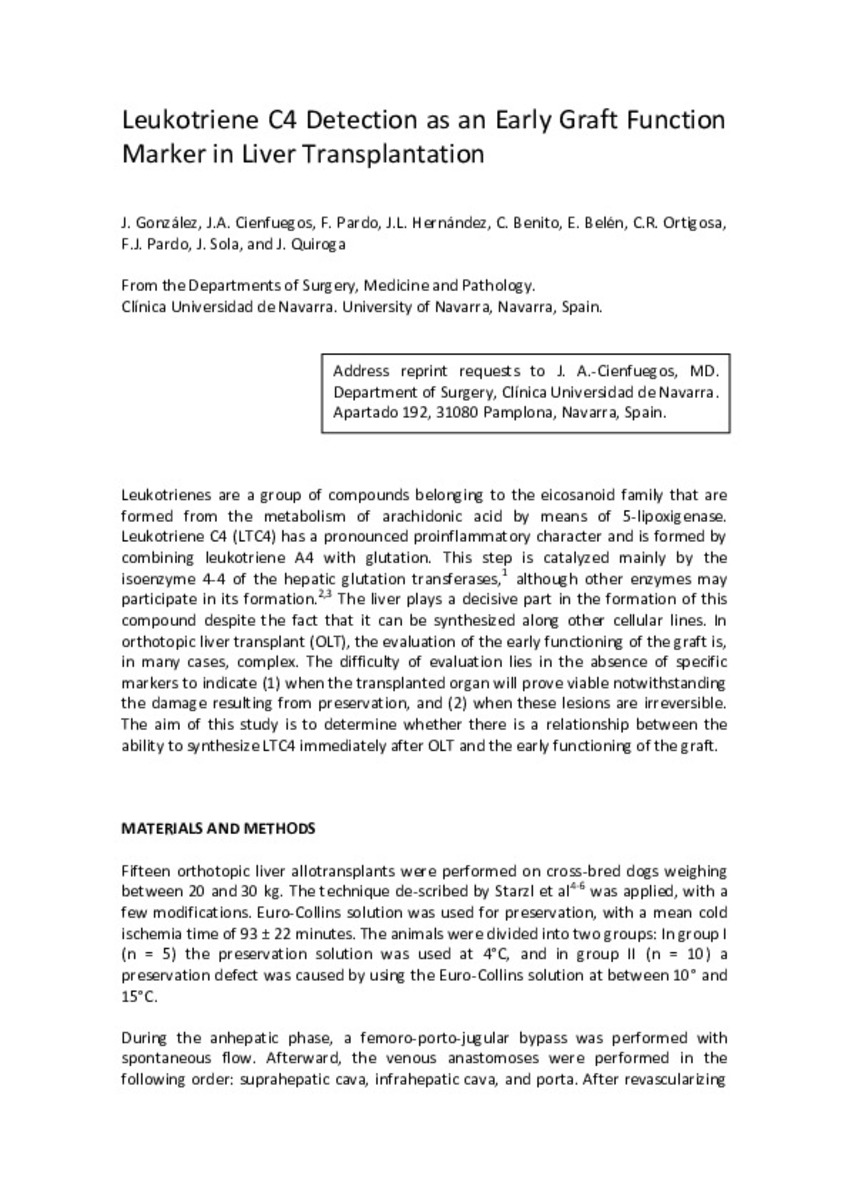Leukotriene C4 detection as an early graft function marker in liver transplantation
Palabras clave :
Liver Transplantation/physiology
SRS-A/blood
Biological Markers
Liver Function Tests
Fecha de publicación :
1992
Cita:
González J, Cienfuegos JA, Pardo F, Hernández JL, Benito C, Balén E, et al. Leukotriene C4 detection as an early graft function marker in liver transplantation. Transplant Proc. 1992 Feb;24(1):135-6.
Aparece en las colecciones:
Estadísticas e impacto
0 citas en

0 citas en

Los ítems de Dadun están protegidos por copyright, con todos los derechos reservados, a menos que se indique lo contrario.







